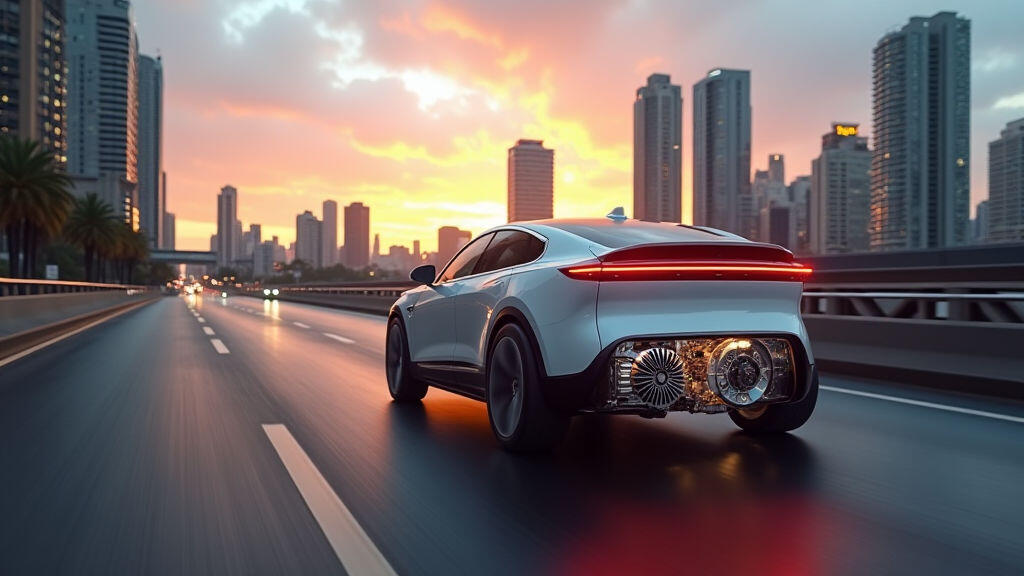Anjing Road, Xiaolan, Zhongshan, Guangdong, China
info@mes-drive.com
08.00 AM-09.00 PM

5 Oct 2025 – In the wake of the World Economic Forum’s latest Green Mobility Summit in Geneva, electric vehicles (EVs) have surged to the top of the global conversation. With governments rolling out record‑breaking subsidies, manufacturers racing to meet new emission targets, and consumers eyeing low‑carbon cars, the EV boom has never looked brighter. Amid this electrified frenzy, a quiet hero powers the transformation: the gear motor, also known as the reducer motor. This article will show how this compact powerhouse is at the heart of tomorrow’s electric mobility, from high‑speed cars to city buses, and why it’s a key player in the unfolding clean‑energy narrative.

The past year has witnessed a seismic shift in automotive preferences. According to IHS Markit, EV sales jumped 70 % worldwide in the first half of 2025, outpacing the 12 % growth of internal‑combustion vehicles (ICVs). This surge is not mere hype; it is driven by concrete policy moves. The European Union’s “Fit for 55” package has set a 2035 deadline for banning new petrol and diesel cars, while China’s new “Zero‑Emission Mobility 2030” plan promises subsidies of up to $3,000 per electric bus or truck. In the United States, the Biden administration’s $174 billion Infrastructure bill incorporates $7 billion for EV charging infrastructure, thereby encouraging mass adoption.
Public sentiment is likewise tipped in favor of EVs. A recent poll by Bloomberg and Gallup found that 68 % of U.S. adults now view electric cars as “highly desirable,” a rise from 47 % in 2022. Meanwhile, cities like Oslo and Los Angeles have already set regulations banning new petrol vehicles by 2030 and 2025, respectively. With such momentum, manufacturers are pushing the envelope on performance and efficiency, and that’s where gear motors step onto the stage.
A gear motor combines an electric motor with a gear train, providing a one‑piece solution that reduces speed, increases torque, and outputs a precise mechanical direction. Think of it as a mini power transmission built BüJack. These small, efficient engines can convert electrical power into mechanical motion with a reduction ratio, making them ideal for applications that need low-speed, high‑torque outputs—exactly what EV drivetrains require.
Compact Powertrain Design
Traditional ICE vehicles rely on multiple components—clutch, gearbox, turbocharger, oil pump. Gear motors eliminate many of these, shrinking the powertrain’s footprint. When a gear motor directly meshes with an electric wheel hub, the system becomes a single integrated unit. This reduces weight and improves packaging—a double win for manufacturers focused on space efficiency.
High Torque at Low Speeds
EVs generate peak torque from zero rpm, but for city driving, the motor often needs a slower gearwheel speed for smooth start‑ups. A gear motor’s built‑in reduction gives instant torque at lower speeds, enabling quick accelerations without sacrificing battery life. That’s why many modern EVs offer “instant agency” and “smooth throttle response” as selling points.
Regenerative Braking Synergy
Regenerative braking—capturing kinetic energy during deceleration—relies on efficient power flow. Gear motors can maintain a favorable reduction ratio even when the vehicle slows, ensuring the electric motor’s generator mode works at its optimal electrical frequency. The result? Greater energy recovery and extended driving range.
Updateability & Scalability
Manufacturers can easily change gear ratios by swapping gear trains inside the motor, a process faster than redesigning an entire gearbox. This modularity helps companies keep up with quick regulatory changes, such as new power limits or emission standards. Gear motors also scale well, from the 2‑kW power of city buses to the 350‑kW beasts in electric car racing.
The gear motor sector is preparing for a 15 % CAGR up to 2030, driven by the electric mobility wave. Singapore-based Elemy predicts that “displacement change in the gear motor segment will correlate directly with EV penetration rates.” This projection is backed by six market research firms (PWC, McKinsey, BloombergNEF) that gauge an annual gear motor sale increase in Chinese, European, and North American EV markets.
Key industry trends:
The gearbox of an EV may appear hidden from the common eye, but its impact on performance, efficiency, and adaptability is profound. From electric buses zipping through tight urban street grids to high‑speed cars promising reliability and acceleration, gear motors form the backbone that transforms raw electricity into motion. As governments push for stricter zero‑emission targets and consumers demand greener, smarter travel, gear motors are set to evolve from a niche component to a ubiquitous element of all new mobility solutions.
In a world where the move toward clean energy is accelerating faster than ever, this simple, reliable, and highly adaptable system is the engine that keeps our electric future on the right track.
Leave A Reply
Your email address will not be published. Required fiels are marked